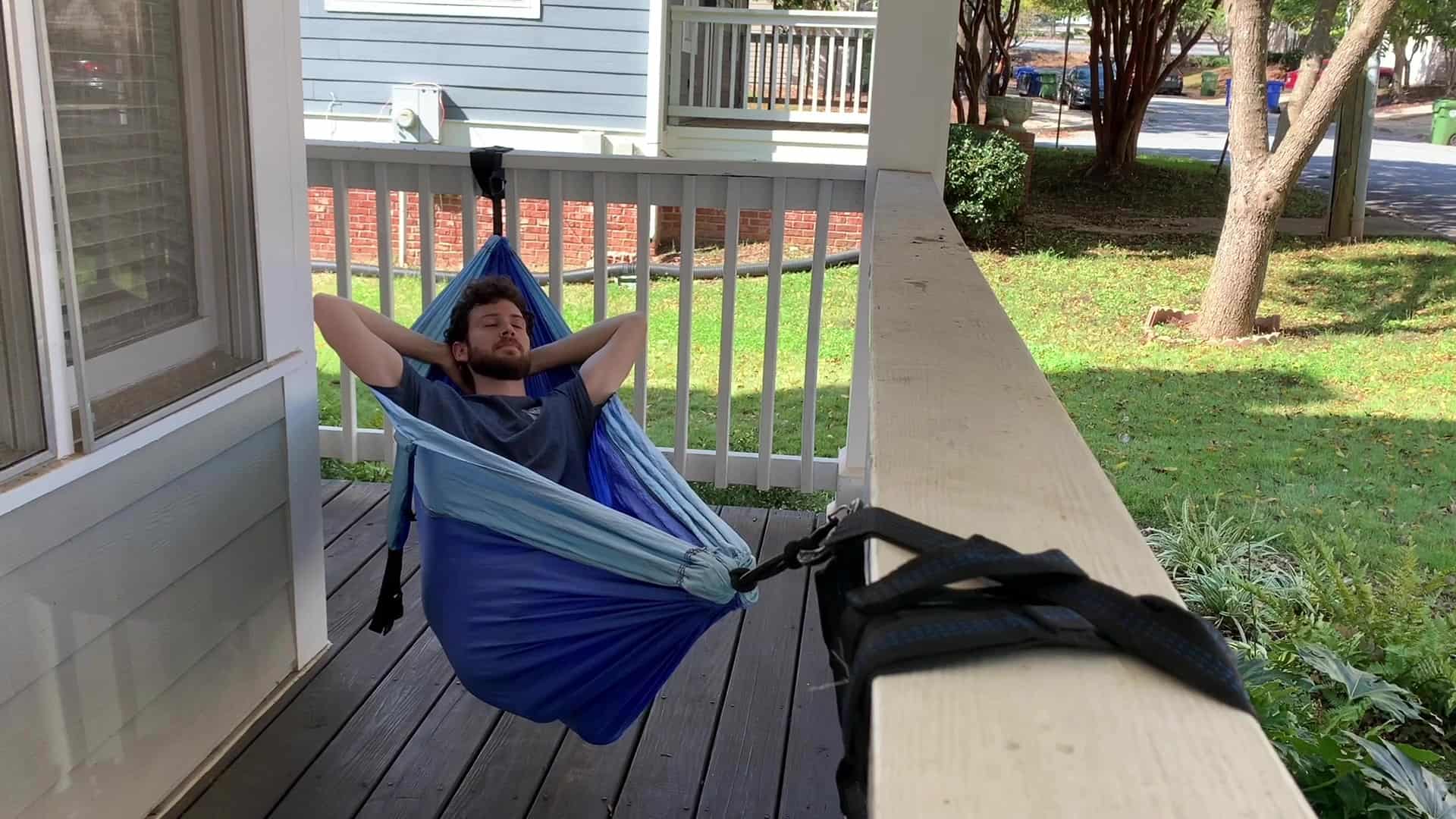

Articles
How To Hang A Hammock On Balcony
Modified: January 5, 2024
Learn how to hang a hammock on your balcony with these helpful articles. Find step-by-step instructions and tips for a relaxing outdoor space.
(Many of the links in this article redirect to a specific reviewed product. Your purchase of these products through affiliate links helps to generate commission for Storables.com, at no extra cost. Learn more)
Introduction
Welcome to our guide on how to hang a hammock on a balcony! A hammock is the perfect addition to any balcony, providing a cozy and relaxing spot to unwind and enjoy the outdoors. Whether you have a small or large balcony, with the right materials and techniques, you can easily set up a hammock and create your own personal oasis.
Before you begin, it’s important to assess your balcony and ensure it can safely support the weight of a hammock. Balconies come in different sizes and configurations, so it’s essential to choose the right hanging method and hardware for your specific balcony setup.
In this guide, we will walk you through the step-by-step process of hanging a hammock on a balcony. We will cover everything from assessing your balcony to selecting the right materials and installing the necessary hanging hardware. By following these steps, you’ll be able to enjoy the gentle sway of a hammock on your balcony in no time.
So, let’s dive in and turn your balcony into a relaxing retreat!
Key Takeaways:
- Create your own personal oasis on your balcony by following these steps to hang a hammock. Enjoy relaxation, comfort, and tranquility in your outdoor retreat.
- Prioritize safety, stability, and proper maintenance to ensure a secure and enjoyable experience with your balcony hammock. Embrace the serenity and gentle sway.
Read more: How To Hang A Hammock On A Balcony
Materials Needed
Before you begin hanging your hammock on a balcony, gather the following materials:
- Hammock: Choose a hammock that fits the size of your balcony and can support your weight comfortably. Look for hammocks made of durable materials like nylon or polyester.
- Mounting Hardware: Depending on your balcony setup, you will need mounting hardware such as hooks, eye bolts, or carabiners. Make sure to select hardware that is suitable for outdoor use and can support the weight of the hammock.
- Rope or Straps: You will need strong and durable ropes or straps to hang the hammock from the mounting hardware. Consider using ropes or straps specifically designed for hammock hanging, as they offer better support and stability.
- Measuring Tape: Use a measuring tape to determine the distance between the hanging points on your balcony. This will help ensure that your hammock hangs at the desired height and is properly balanced.
- Drill and Drill Bits: If you need to install hooks or eye bolts, you will require a drill and the corresponding drill bits for your chosen hardware. Make sure to use a drill suitable for your balcony’s material, such as concrete or wood.
- Level: A level tool will help you ensure that your hammock is hung evenly and does not tilt to one side.
These are the basic materials you will need to hang a hammock on your balcony. However, it’s always a good idea to check the manufacturer’s instructions for any additional materials or tools that may be required for your specific hammock or balcony setup.
Remember, safety should be your top priority when hanging a hammock on a balcony. Make sure that the materials you choose are of high quality and can handle the weight and stress placed on them. Additionally, always follow the manufacturer’s guidelines and consult any building regulations or codes specific to your area.
Now that you have your materials ready, let’s move on to the next step: assessing your balcony.
Step 1: Assessing the Balcony
Before hanging a hammock on your balcony, it’s crucial to assess the space and determine if it can safely accommodate a hammock. Here are a few important factors to consider:
- Weight Capacity: Check the weight capacity of your balcony by referring to your building’s structural specifications or consulting with a professional. This will ensure that the balcony can support the weight of the hammock, as well as the weight of anyone who will be using it.
- Size and Shape: Measure the dimensions of your balcony to determine the available space for the hammock. Consider the length, width, and height so that you can choose a hammock that fits comfortably in the designated area.
- Structural Support: Identify the structural elements of your balcony, such as beams or columns, that can provide sturdy support for a hammock. These elements will serve as the anchor points for hanging the hammock.
- Obstructions: Take note of any obstacles or obstructions on your balcony, such as railings, plants, or furniture. Ensure that there is enough clearance for the hammock to hang freely without anything obstructing its movement.
- Privacy and Sun Exposure: Consider the level of privacy and sun exposure you desire when selecting the positioning of your hammock. You may want to hang the hammock in a spot that offers shade during hot summer days or provides a view that aligns with your preference.
By assessing your balcony thoroughly, you’ll have a better understanding of its limitations and possibilities. This will help you make informed decisions when selecting a hammock and choosing the appropriate hanging method and hardware.
Remember, safety is paramount when hanging a hammock on your balcony. If you have any doubts about the structural integrity of your balcony or need assistance, consult a professional before proceeding with the installation.
Once you’ve assessed your balcony, you can move on to the next step: selecting the hammock.
Step 2: Selecting the Hammock
When it comes to selecting a hammock for your balcony, there are a few key factors to consider. Here’s what you need to keep in mind:
- Size: Measure the available space on your balcony to determine the appropriate size of the hammock. Consider both the length and width of the hanging area. It’s essential to choose a hammock that fits comfortably within this space without being too cramped or hanging too low.
- Weight Capacity: Check the weight capacity of the hammock to ensure it can safely support the weight of the intended users. Take into account the weight of all individuals who will be using the hammock simultaneously.
- Material: Hammocks come in various materials, each with its own advantages. Common options include nylon, polyester, and cotton. Nylon and polyester hammocks are generally more durable and weather-resistant, making them ideal for outdoor use. Cotton hammocks have a softer, breathable feel, but they may require more maintenance and may not be as suitable for prolonged exposure to the elements.
- Type: Consider the type of hammock that best suits your needs and preferences. Traditional hammocks typically feature spreader bars that keep the fabric taut and open. Alternatively, you can choose a Brazilian or camping hammock, which do not have spreader bars and allow for a more cocoon-like experience.
- Accessories: Think about any additional accessories you might need for your hammock, such as pillows, blankets, or mosquito netting. These accessories can enhance your comfort and enjoyment while using the hammock.
It’s also worth noting that some hammocks come as a complete set with the necessary hanging hardware, while others require you to purchase the hardware separately. Be sure to check whether the hammock you choose includes the required mounting accessories or if you will need to purchase them separately.
When selecting a hammock, consider your personal preferences, the aesthetic of your balcony, and the level of comfort you desire. Remember to prioritize quality and durability to ensure that your hammock withstands regular use and the outdoor elements.
Once you have chosen the perfect hammock, you can move on to the next step: selecting the hanging method.
Step 3: Choosing the Hanging Method
When it comes to hanging a hammock on your balcony, there are a few different hanging methods you can choose from. The right method for you will depend on the type of balcony you have and the level of permanence you desire. Here are a few common hanging methods to consider:
- Wall Mount: If you have solid walls on your balcony, you can mount the hammock directly to the wall using hooks or eye bolts. This method provides a secure and permanent hanging solution. Make sure to choose hardware that is suitable for outdoor use and can support the weight of the hammock and its occupants.
- Beam or Column Mount: If your balcony has beams or columns, you can attach the hammock to these structural elements using hooks or eye bolts. This method offers stability and can be a good option for balconies with limited wall space.
- Stand Alone Frame: If your balcony does not have suitable mounting points, you can opt for a freestanding hammock stand. These stands are specifically designed to support hammocks and provide a portable and flexible hanging solution. They are available in a variety of sizes and materials, so you can choose one that fits your balcony and aesthetic preferences.
- Railing Mount: Some balconies have sturdy railings that can be used to hang a hammock. In this case, you can use straps or rope to secure the hammock to the railing. Ensure that the railing is strong enough to support the weight and stress of the hammock.
Consider the specific layout and structure of your balcony when choosing the hanging method. Also, take into account any regulations or restrictions that may apply to your building or homeowner’s association. It’s always a good idea to consult your building management or a professional if you are unsure about the appropriate hanging method for your balcony.
Once you have determined the hanging method, you can proceed to the next step: installing the hanging hardware.
When hanging a hammock on a balcony, make sure to securely attach the hammock to strong support points, such as sturdy railings or beams, to ensure safety and stability. Always follow the manufacturer’s instructions for proper installation.
Read more: How To Hang Curtains On Balcony
Step 4: Installing the Hanging Hardware
Now that you have chosen the hanging method for your hammock, it’s time to install the necessary hardware. The exact installation process will depend on the type of hanging method you have selected. Here are some general guidelines to follow:
- Locate the Hanging Points: Determine the specific points where you will attach the hammock hardware. For wall mount or beam mount methods, locate the stud or beam using a stud finder or by tapping on the wall. If using a stand-alone frame, assemble the frame according to the manufacturer’s instructions.
- Drill Pilot Holes: If you need to install hooks or eye bolts, use a drill and the appropriate drill bit to create pilot holes at the marked hanging points. The pilot holes should be slightly smaller than the diameter of the hardware to ensure a secure fit.
- Secure the Hardware: Insert the hooks or eye bolts into the pilot holes and twist them in tightly. Ensure that they are securely fastened to provide a stable anchor for the hammock.
- Attach the Hammock: If using straps or rope, follow the manufacturer’s instructions to properly attach the hammock to the hooks, eye bolts, or railing. If using a stand-alone frame, hang the hammock according to the frame’s instructions.
- Double Check Stability: Once the hammock is attached, give it a gentle shake to ensure it is secure and stable. Make any necessary adjustments or tighten the hardware if needed.
It’s important to note that the installation process may vary depending on the specific hardware and hanging method you are using. Always refer to the manufacturer’s instructions for the recommended installation steps.
When installing the hardware, take care to avoid damaging the balcony surface or structure. If you are unsure about the installation process or concerned about potential damage, it’s best to seek assistance from a professional or consult with your building management.
With the hardware properly installed, you’re now ready to move on to the next step: hanging the hammock.
Step 5: Hanging the Hammock
With the hardware securely installed, it’s time to hang your hammock on the balcony. Follow these steps to ensure a successful and enjoyable hanging experience:
- Determine the Hanging Height: Use a measuring tape to measure the desired height at which you want the hammock to hang. This will depend on personal preference, but a general rule of thumb is to hang the hammock with a slight sag to provide a comfortable and relaxed position.
- Attach the Hammock to the Hardware: If using hooks or eye bolts, securely attach the hammock to the hardware using the provided attachment points. If using straps or rope, follow the manufacturer’s instructions to properly fasten the hammock.
- Check for Balance: Stand back and visually assess the hammock’s position. Ensure that it is hanging evenly and not tilting to one side. Make any necessary adjustments to achieve a balanced position.
It’s important to note that the specific hanging process may vary depending on the type of hammock and hardware you are using. Always refer to the manufacturer’s instructions for the recommended steps to hang your particular hammock.
When hanging the hammock, be careful to avoid any tangling or twisting of the ropes or straps. Ensure that the hammock is securely attached to the hardware to prevent any accidents or injuries.
Once your hammock is properly hung, you can move on to the next step: testing and adjusting the height.
Step 6: Testing and Adjusting the Height
After hanging the hammock on your balcony, it’s essential to test and adjust the height to ensure optimal comfort and functionality. Follow these steps to get the perfect hammock height:
- Test the Hammock: Carefully sit or lie in the hammock to get a feel for its comfort and stability. Gently sway side to side to test the balance and adjust the position if necessary.
- Assess the Height: Consider the distance between the hammock and the ground or balcony floor. Ensure that the height allows for easy entry and exit from the hammock without any struggle or risk of injury. Additionally, check that the hammock does not touch the ground when in use.
- Make Adjustments: If the height feels too low, you may need to adjust the attachment points higher to achieve a more comfortable position. Alternatively, if the hammock feels too high, you can lower the attachment points accordingly. Use caution when making adjustments to maintain the stability and balance of the hammock.
- Test Again: Once you have made the necessary adjustments, test the height and comfort of the hammock again. Repeat this step until you find the perfect height that allows for easy entry and provides a comfortable and relaxing position.
Remember that personal preference plays a significant role in determining the ideal height for your hammock. Some prefer a hammock that creates a deep cocoon-like feel, while others prefer a more upright and open position. Take your time to find the height that suits your comfort and relaxation needs.
It’s worth noting that the height of your hammock may also depend on the length of the ropes or straps attached to the hardware. Different hanging methods and hardware may provide different height options, so use the adjusting mechanisms provided by your chosen hardware to find the desired height.
Once you have tested and adjusted the height to your satisfaction, you’re almost ready to fully enjoy your balcony hammock. But before that, there’s one more crucial step: ensuring safety and stability.
Step 7: Ensuring Safety and Stability
Ensuring safety and stability is the final step in hanging a hammock on your balcony. By following these guidelines, you can enjoy your hammock with peace of mind:
- Weight Capacity: Always adhere to the weight capacity limits specified by the hammock manufacturer. Overloading the hammock can lead to structural damage or accidents. Consider the combined weight of all users who will be occupying the hammock.
- Regular Inspection: Regularly inspect the hardware, ropes, or straps for any signs of wear or damage. Replace any worn-out or damaged components to maintain the hammock’s stability and safety.
- Avoid Jumping or Rough Use: Discourage jumping into the hammock or engaging in any rough play that might compromise its stability. Hammocks are designed for gentle swaying and relaxation, so use it accordingly.
- Check the Positioning Periodically: Occasionally check the positioning of the hammock to ensure that the attachment points are secure and the hammock remains properly balanced.
- Keep Clear of Obstacles: Ensure the hammock is clear of any surrounding obstacles that could interfere with its movement. This includes keeping furniture, plants, or other objects at a safe distance from the swinging range of the hammock.
- Supervise Children: Supervision is essential when children are using the hammock. Make sure they understand the hammock’s limitations and are using it safely and responsibly.
- Weather Considerations: Take weather conditions into account when using your balcony hammock. Avoid using it during stormy or extremely windy weather. Additionally, protect the hammock from prolonged exposure to harsh sunlight or rain by using a hammock cover or taking it indoors when not in use.
By following these safety guidelines, you can ensure a safe and enjoyable experience when using your balcony hammock. Safety should always be a priority, so it’s important to regularly inspect and maintain the hammock and its components.
Now that you have taken the necessary safety precautions, it’s time to relax and enjoy your newly hung hammock on your balcony. Take some time to unwind, read a book, enjoy the view, or simply take a much-needed nap in your own personal oasis.
Happy hammocking!
Read more: How To Hang A Camping Hammock
Conclusion
Congratulations! You have successfully learned how to hang a hammock on your balcony. With careful assessment, proper selection of materials, and precise installation, you can transform your balcony into a cozy and relaxing retreat. By following the step-by-step process, you have created your own personal oasis where you can unwind, read a book, or simply enjoy the gentle sway of the hammock.
Remember, safety should always be a priority when hanging a hammock on your balcony. Ensure that the weight capacity of your balcony is sufficient, and choose high-quality materials and hardware that can withstand the stress and weight placed on them. Regularly inspect and maintain the hammock and its components to ensure continued safety and stability.
Enjoy the process of selecting a hammock that suits your preferences and the aesthetic of your balcony. Consider factors such as size, weight capacity, material, and additional accessories to enhance your comfort and enjoyment.
Once you have carefully assessed your balcony and selected the appropriate hanging method, use the provided hardware to securely attach the hammock. Test the height and make any necessary adjustments to achieve the perfect balance and comfort. Finally, ensure safety and stability by following the recommended guidelines and practicing responsible use of the hammock.
Now, all that’s left to do is kick back, relax, and enjoy the soothing embrace of your balcony hammock. Experience the serenity, the gentle sway, and the comfort it provides. Let the stresses of the day melt away as you soak in the fresh air and take in the beautiful surroundings.
Remember to take good care of your hammock, store it properly, and protect it from harsh weather conditions. With proper maintenance, your balcony hammock can provide you with many moments of relaxation and tranquility for years to come.
Thank you for joining us on this journey of learning how to hang a hammock on a balcony. We hope you find joy and serenity in your new outdoor oasis. Happy hammocking!
Frequently Asked Questions about How To Hang A Hammock On Balcony
Was this page helpful?
At Storables.com, we guarantee accurate and reliable information. Our content, validated by Expert Board Contributors, is crafted following stringent Editorial Policies. We're committed to providing you with well-researched, expert-backed insights for all your informational needs.

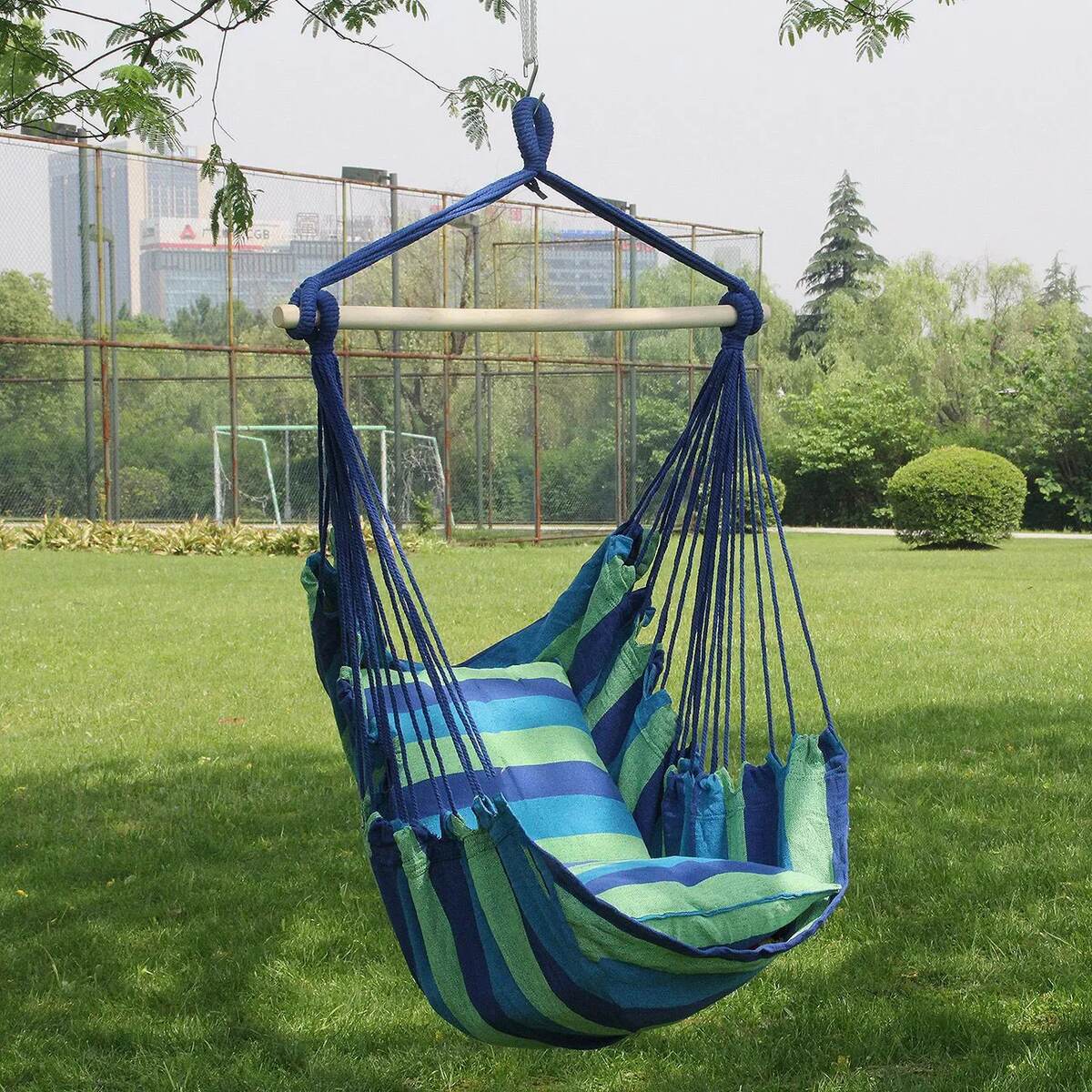
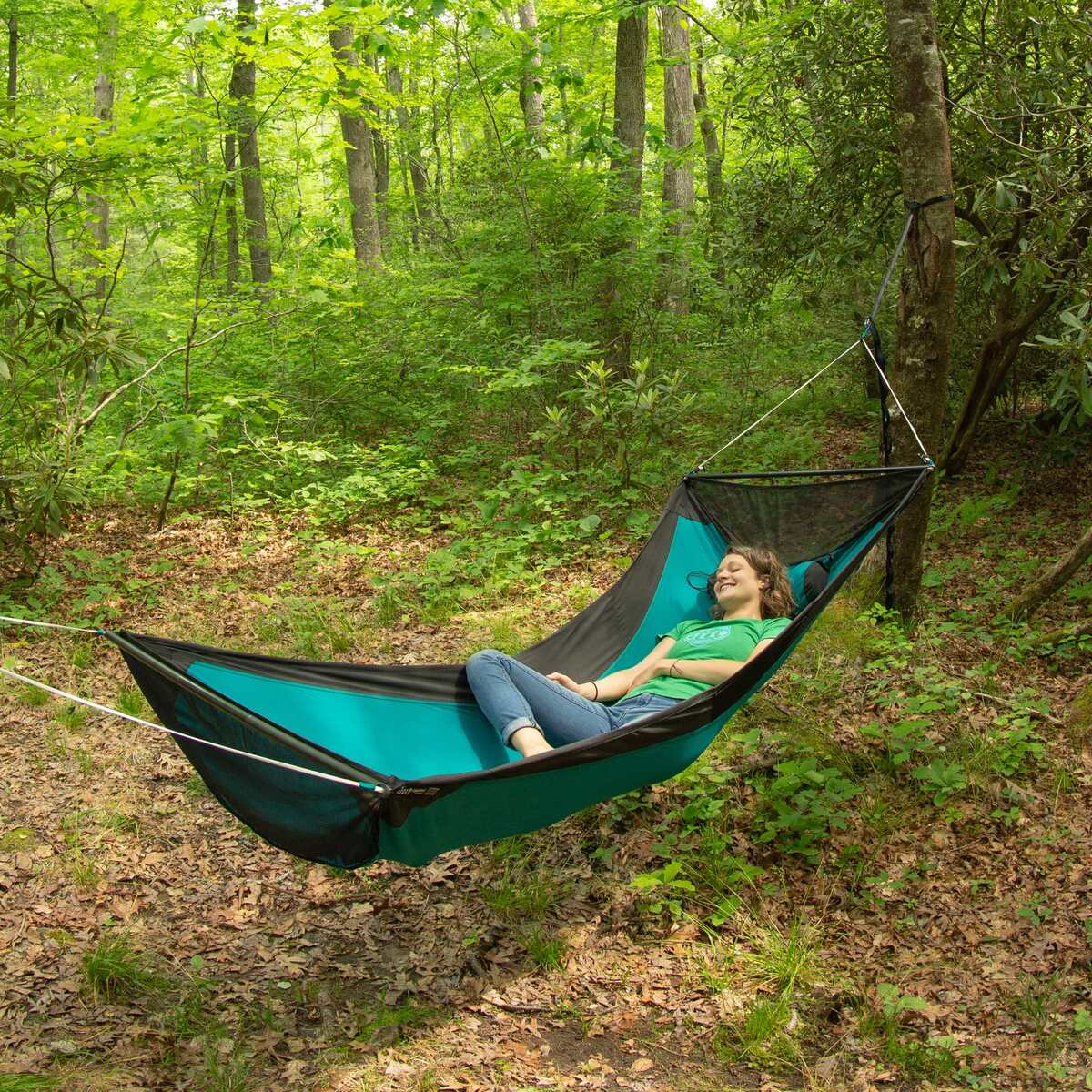
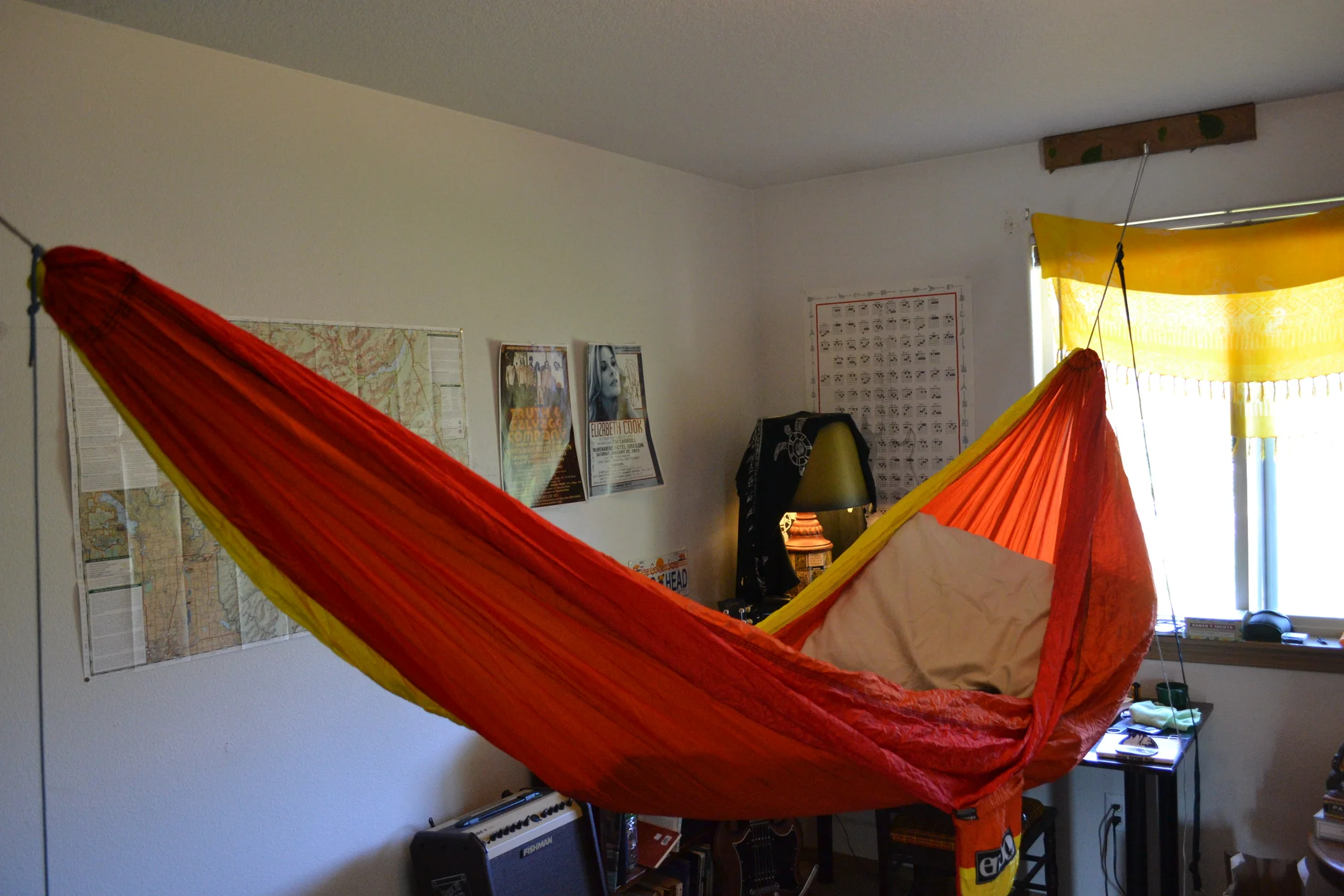

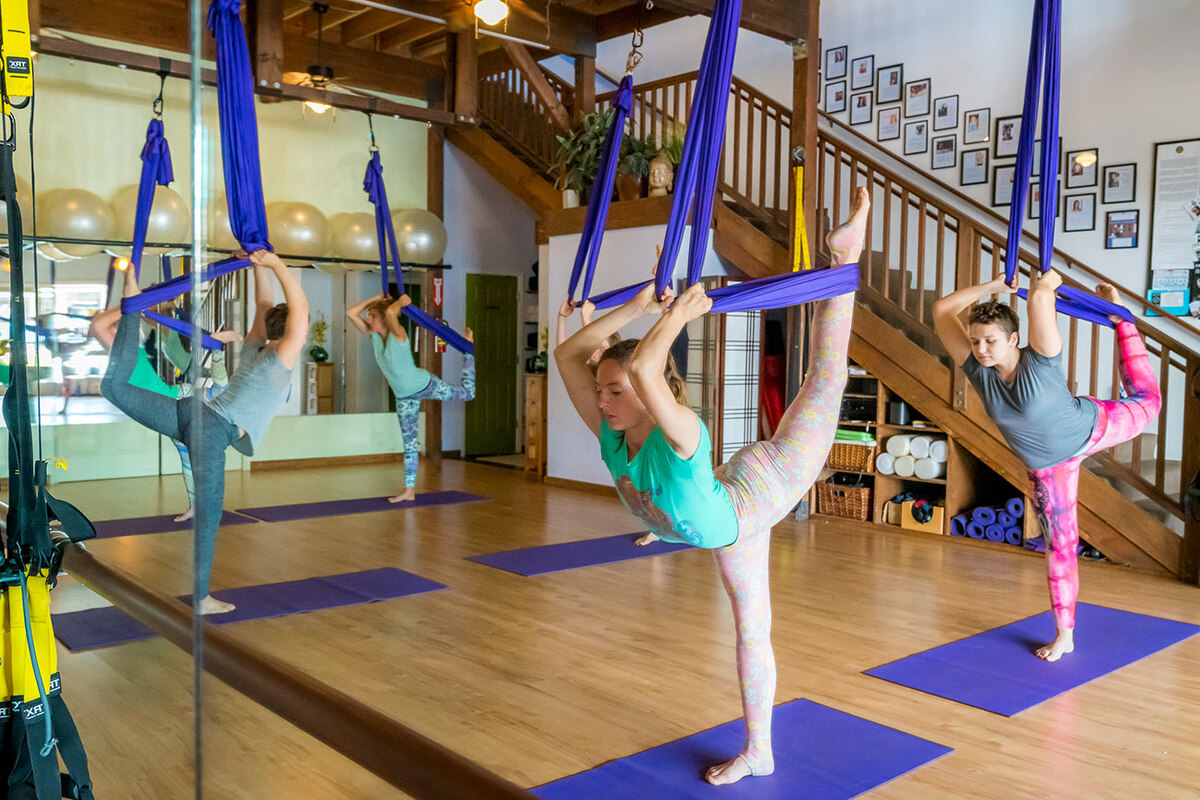
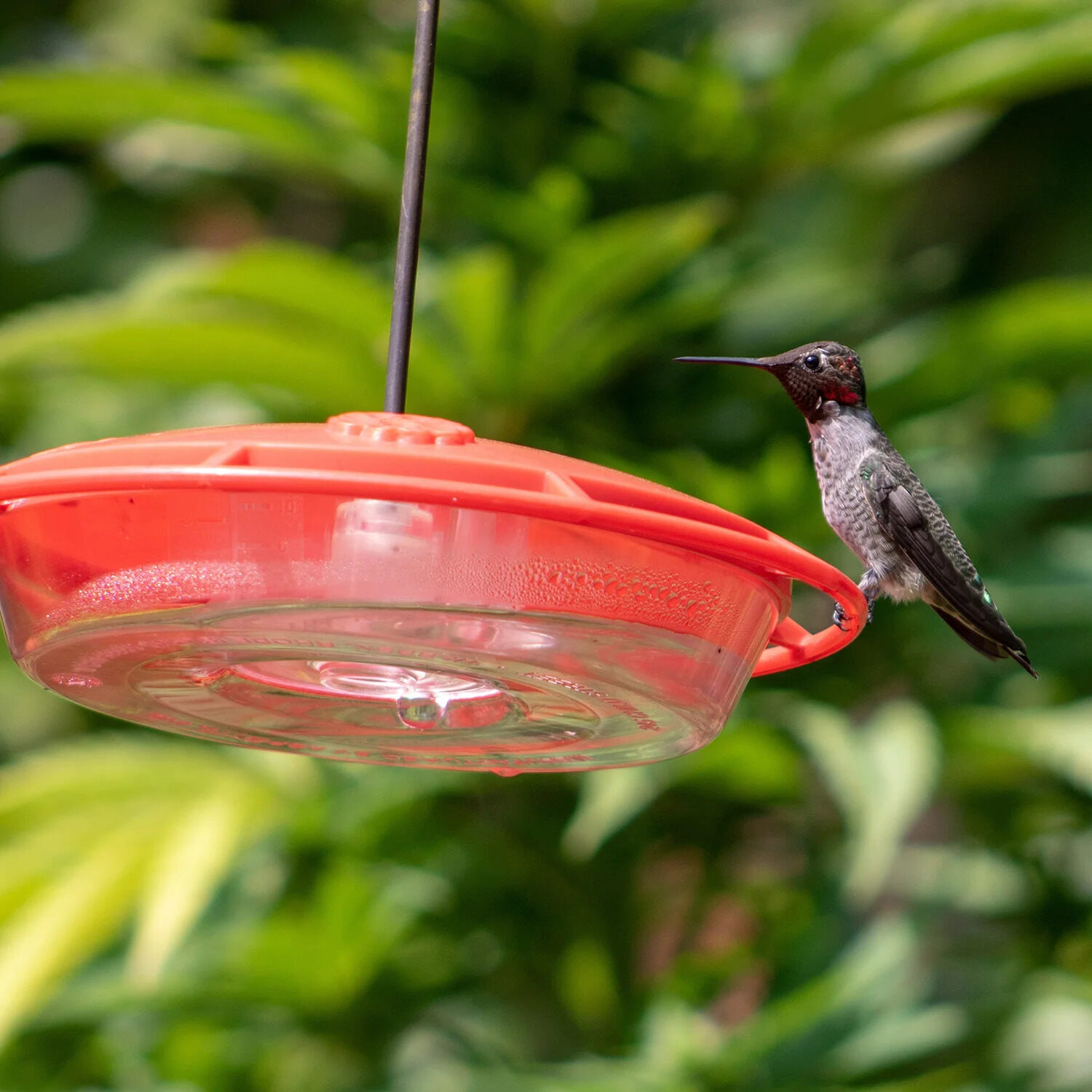
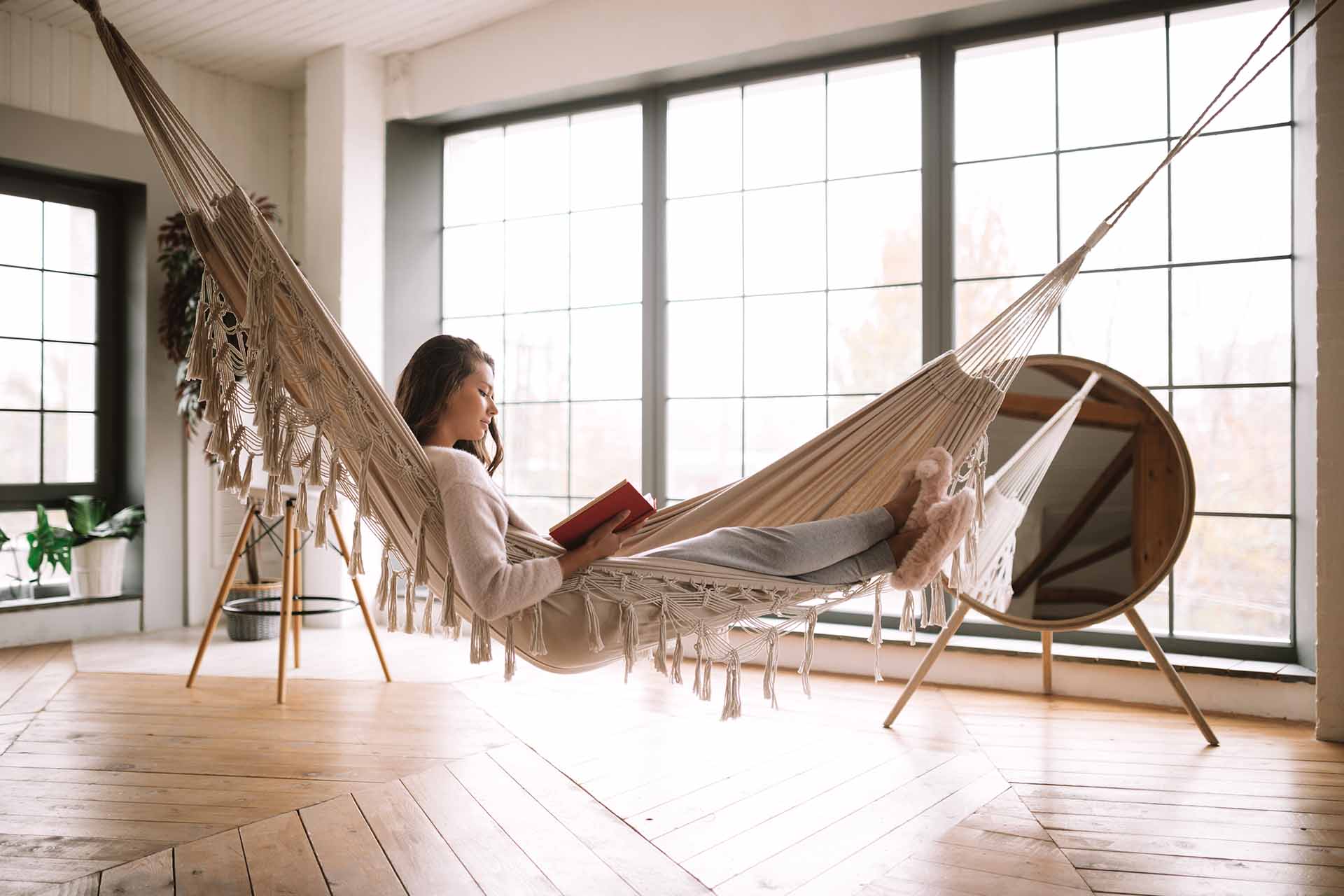
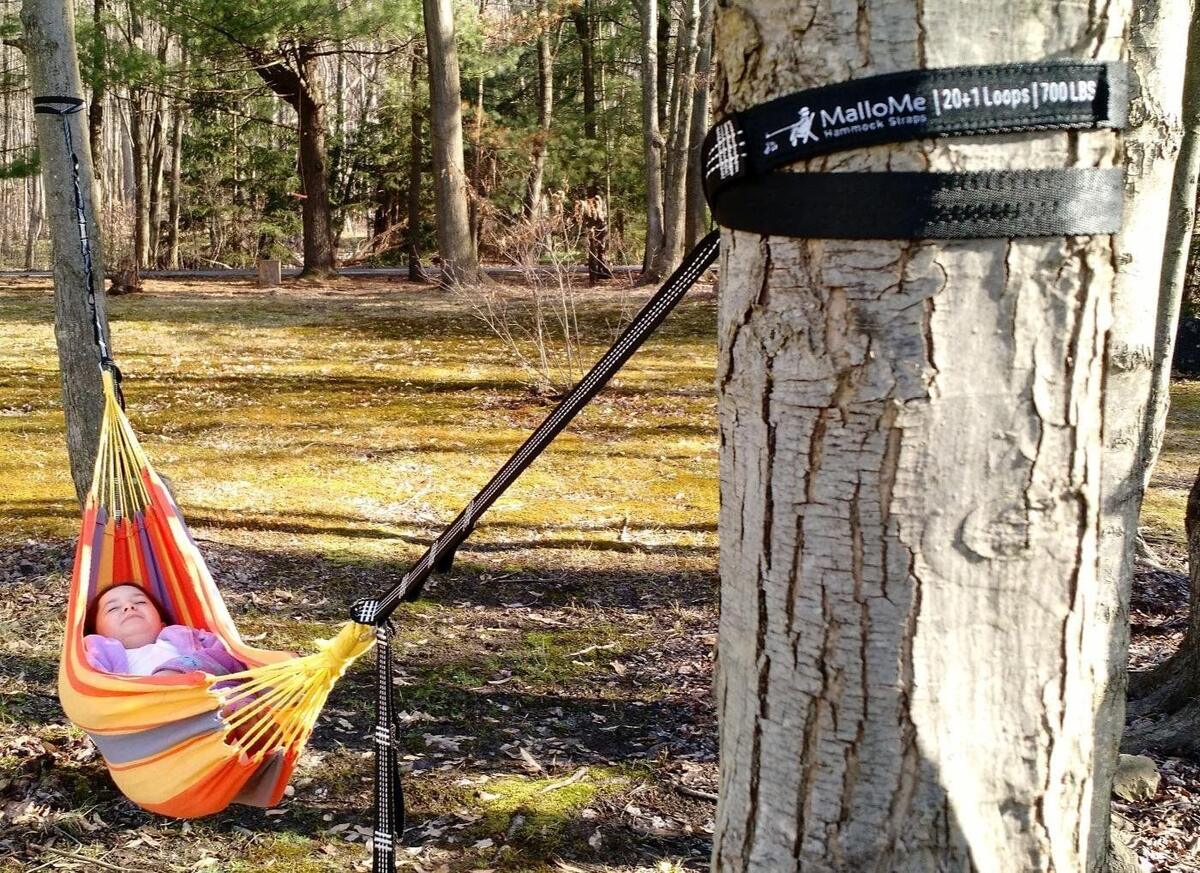
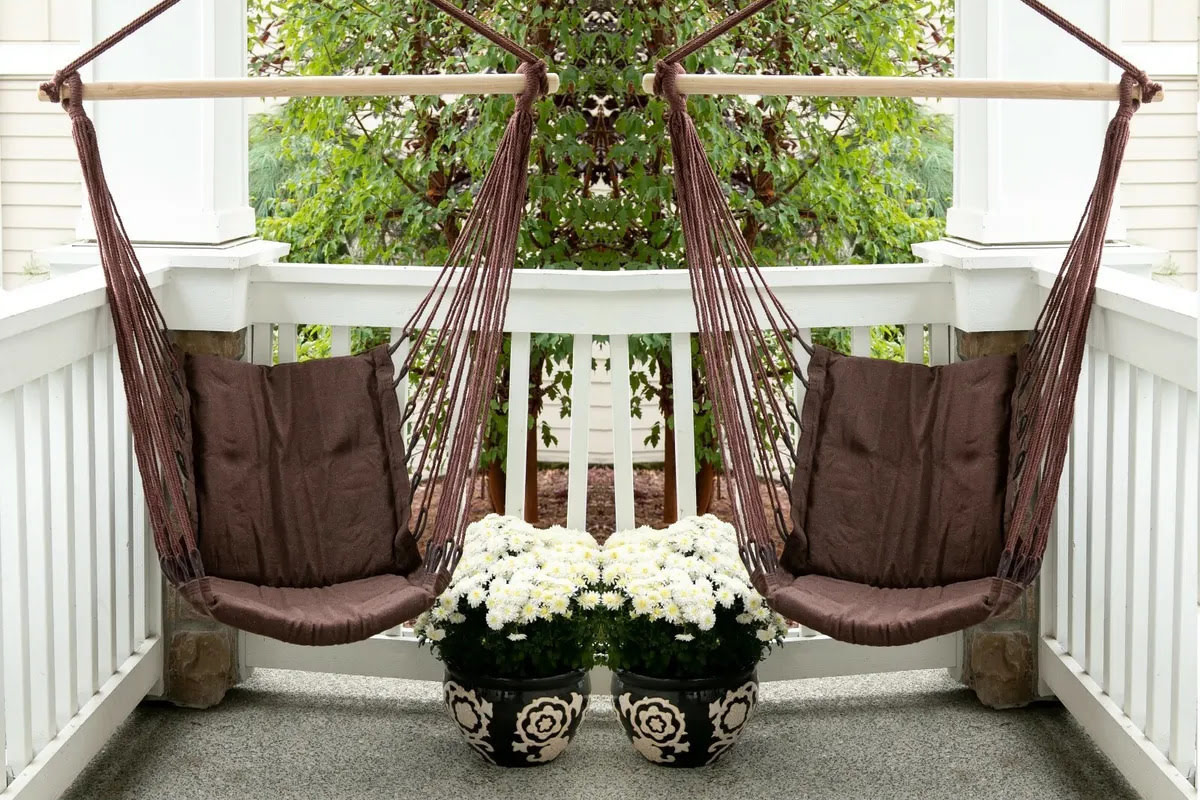
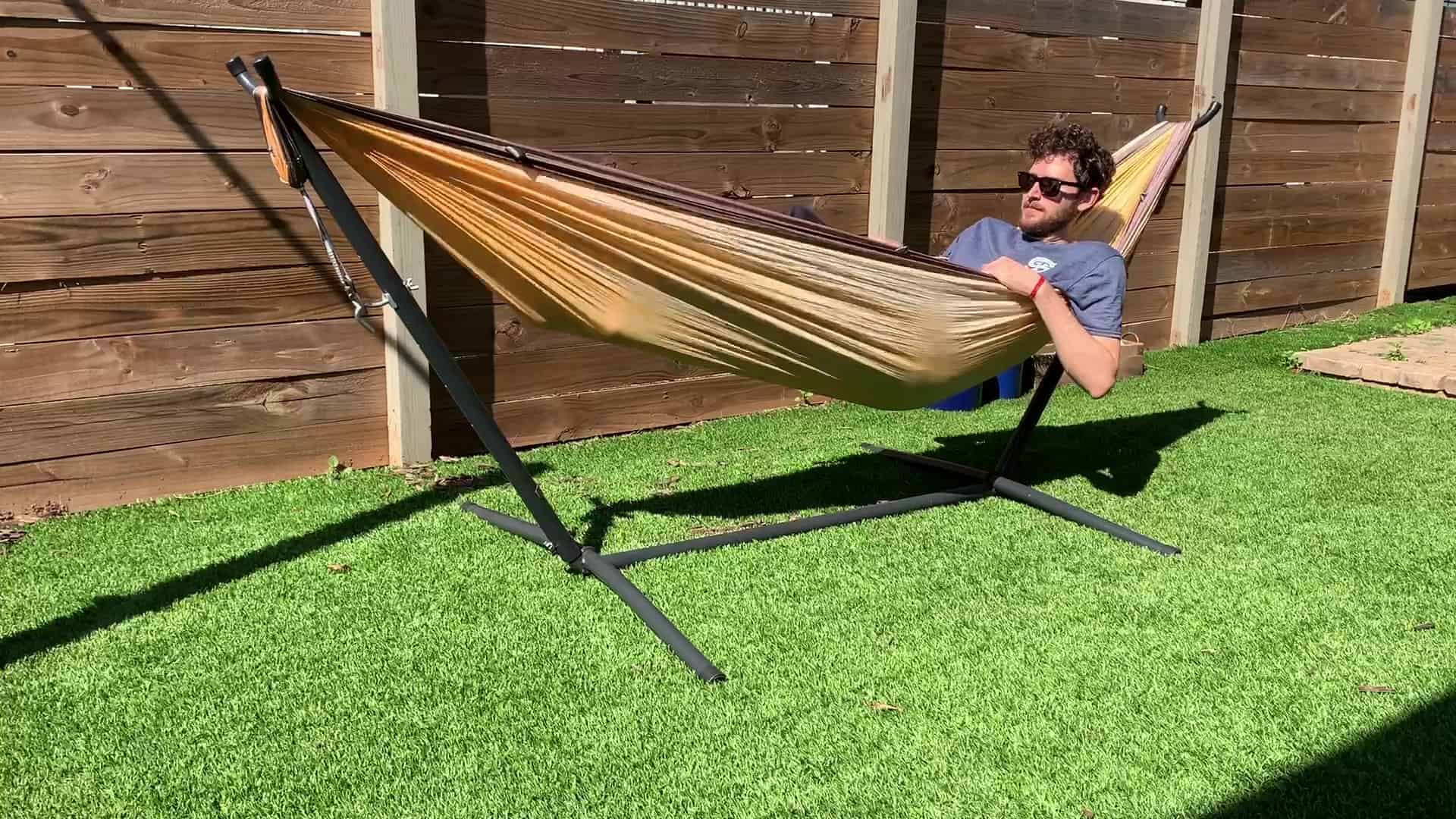



0 thoughts on “How To Hang A Hammock On Balcony”